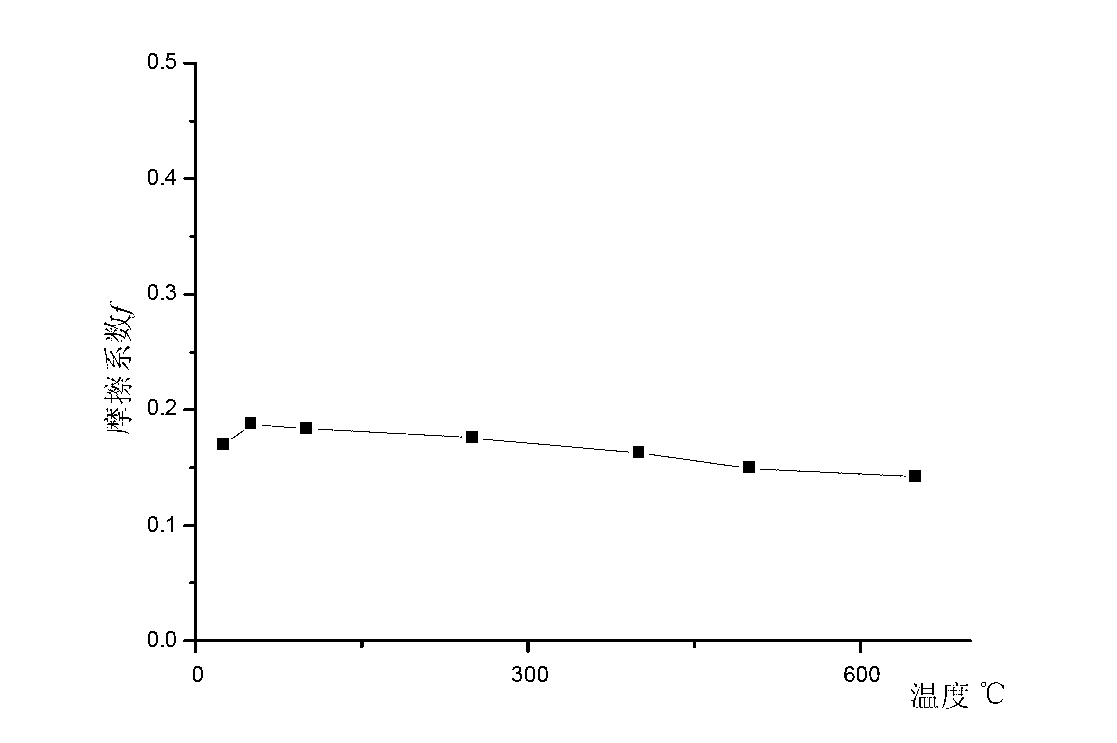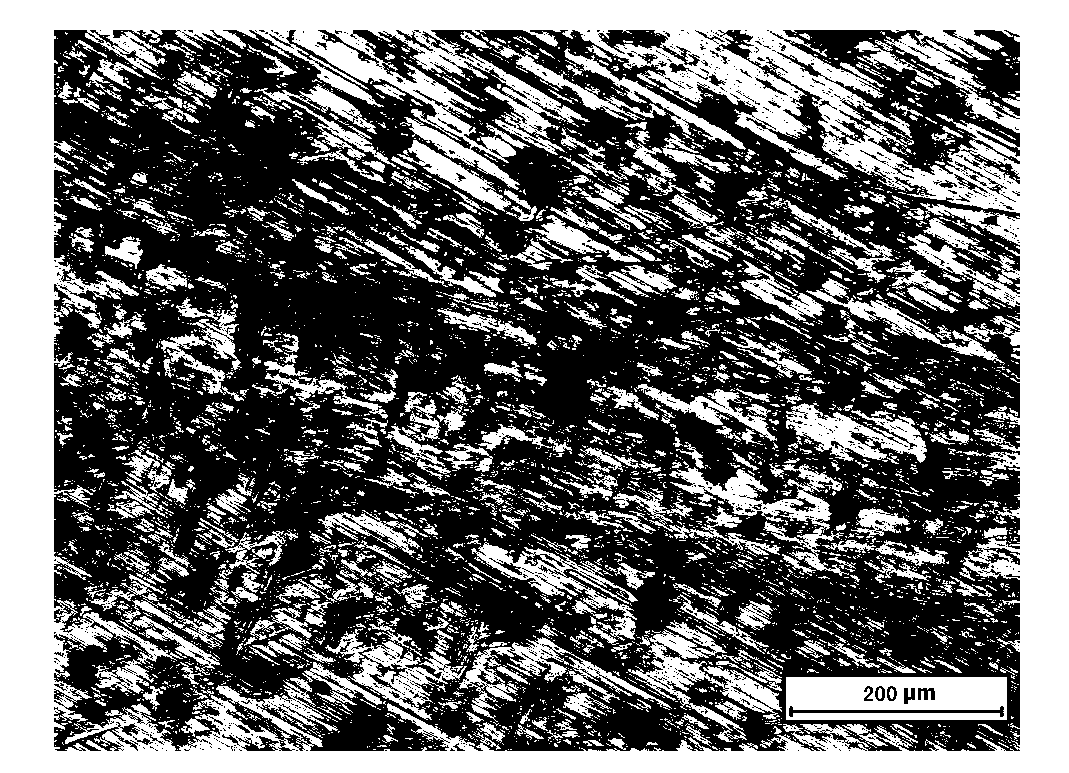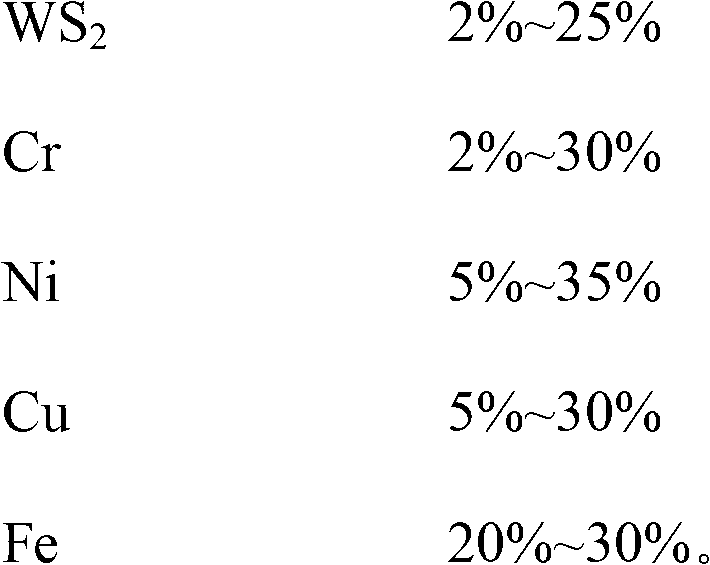High-temperature wear-resistant self-lubrication composite material added with WS2 and preparation method of composite material
A composite material, high-temperature wear-resistant technology, applied in the field of bearing alloy materials, can solve problems such as poor wear resistance, difficult maintenance, difficult friction and wear, etc., and achieve the effects of improving comprehensive technical performance, rich raw material sources, and extending working life
Inactive Publication Date: 2012-10-03
无锡润鹏复合新材料有限公司
View PDF5 Cites 4 Cited by
- Summary
- Abstract
- Description
- Claims
- Application Information
AI Technical Summary
Problems solved by technology
General iron-based and copper-based materials are not suitable for the friction and wear of steel rolling environment due to insufficient strength, while composite materials based on insoluble alloys such as W and Mo are too expensive for enterprises to accept
[0005] CN1125776A discloses a tungsten-copper-nickel-carbon high-temperature wear-resistant alloy, and products made of it solve the problems of poor wear resistance and short service life of alloys or parts at high temperatures, especially in rapid cooling and rapid heating operations
However, the alloy material uses a large amount of iron, and the strength of the iron matrix itself is poor, which affects its final high-temperature mechanical properties.
[0008] The existing alloy materials have insufficient high temperature wear resistance, and cannot meet the requirements of high temperature resistance, wear resistance and self-lubrication at the same time, and have shortcomings such as short life and difficult maintenance. Especially for some occasions that require oil-free lubrication, the existing alloy materials Therefore, it is imminent to study a composite material with good temperature resistance, wear resistance and self-lubrication
Method used
the structure of the environmentally friendly knitted fabric provided by the present invention; figure 2 Flow chart of the yarn wrapping machine for environmentally friendly knitted fabrics and storage devices; image 3 Is the parameter map of the yarn covering machine
View moreImage
Smart Image Click on the blue labels to locate them in the text.
Smart ImageViewing Examples
Examples
Experimental program
Comparison scheme
Effect test
Embodiment
[0053] Adding WS according to the present invention 2 The preparation method of the high-temperature wear-resistant self-lubricating composite material is prepared to obtain the composite material, and its composition and preparation process parameters are shown in Table 1 Example 1-Example 6:
[0054] Table 1: Adding WS 2 The composition and preparation conditions of high temperature wear-resistant self-lubricating composites
[0055]
the structure of the environmentally friendly knitted fabric provided by the present invention; figure 2 Flow chart of the yarn wrapping machine for environmentally friendly knitted fabrics and storage devices; image 3 Is the parameter map of the yarn covering machine
Login to View More PUM
 Login to View More
Login to View More Abstract
The invention relates to a high-temperature wear-resistant self-lubrication composite material added with WS2 and a preparation method of the composite material. The composite material contains the following ingredients in percent by mass: 2%-25% of WS2, 2%-30% of Cr, 5%-35% of Ni, 5%-30% of Cu and 20%-30% of Fe. An alloy material achieving self-lubrication within a width range is prepared by adoption of a powder metallurgy method. The composite material has excellent high-temperature strength, heat resistance, heat stability and economy; and the composite material has good abrasion resistance and can realize self-lubrication at the temperature of 400 DEG C to 650 DEG C, is applicable to sliding parts of high-temperature devices, and achieves integration of a structural material and a lubricating material in design.
Description
technical field [0001] The invention relates to a metal-based self-lubricating composite material with high temperature resistance and wear resistance, in particular to a WS-added composite material 2 A high temperature wear-resistant self-lubricating composite material and a preparation method thereof belong to the field of bearing alloy materials. Background technique [0002] In the fields of aerospace industry, nuclear industry, metallurgy and chemical industry, the rotating parts often work under harsh conditions such as high temperature, high load, vacuum, strong oxidation and strong radiation, and the working environment has far exceeded that of ordinary lubricating oil and grease. limit of use. General lubricating greases are prone to carbonization and evaporation failure in high temperature environments. [0003] Oil-free self-lubricating bearings, sealing rings and other components that operate under high temperature and high-speed loads require good strength, go...
Claims
the structure of the environmentally friendly knitted fabric provided by the present invention; figure 2 Flow chart of the yarn wrapping machine for environmentally friendly knitted fabrics and storage devices; image 3 Is the parameter map of the yarn covering machine
Login to View More Application Information
Patent Timeline
 Login to View More
Login to View More IPC IPC(8): C22C30/02C22C1/05
Inventor 李长生孙建荣唐华刘金银子范有志钱周
Owner 无锡润鹏复合新材料有限公司
Features
- Generate Ideas
- Intellectual Property
- Life Sciences
- Materials
- Tech Scout
Why Patsnap Eureka
- Unparalleled Data Quality
- Higher Quality Content
- 60% Fewer Hallucinations
Social media
Patsnap Eureka Blog
Learn More Browse by: Latest US Patents, China's latest patents, Technical Efficacy Thesaurus, Application Domain, Technology Topic, Popular Technical Reports.
© 2025 PatSnap. All rights reserved.Legal|Privacy policy|Modern Slavery Act Transparency Statement|Sitemap|About US| Contact US: help@patsnap.com



